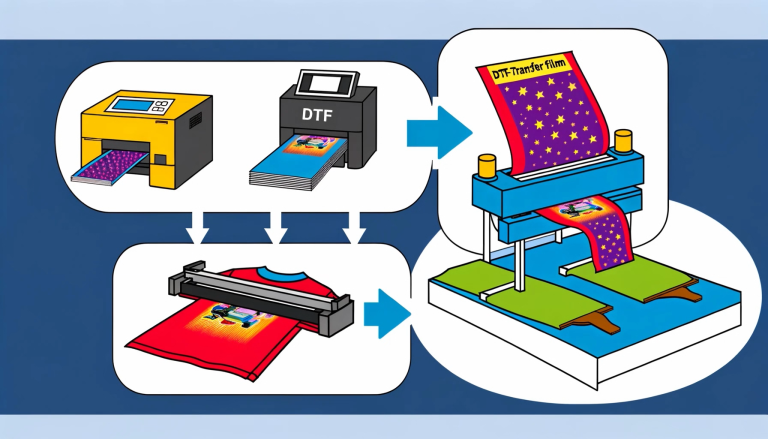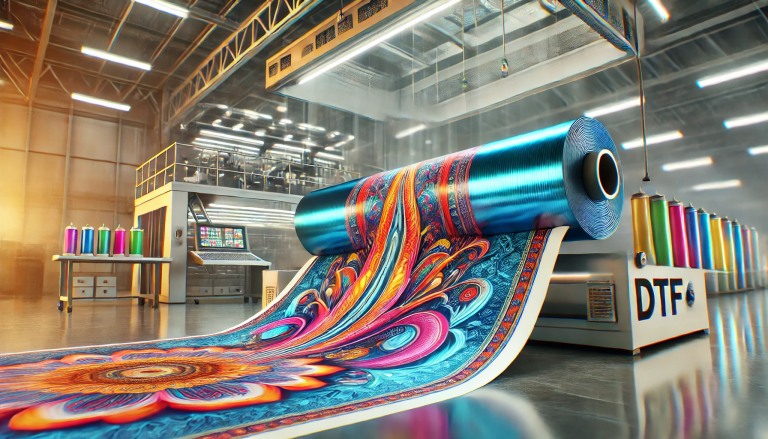“Direct to Film Printing: How to Use?” -MAXDTF- DTF Film PET A4 Manufacturer, DTF Film double-sided Manufacturer, Made in China
Part I: Understanding Direct-to-Film (DTF) Printing
Direct to Film (DTF) printing is a modern digital printing method that has revolutionized the industry with its ability to create high-quality, durable prints on a wide variety of substrates. Before delving into the step-by-step process of using this innovative technique, it’s crucial to understand what DTF printing entails.
DTF printing involves printing a design directly onto a specialized PET film using a printer outfitted with DTF inks. This printed film is then coated with an adhesive powder, which adheres to the ink. Finally, the prepared film is heat pressed onto the substrate, transferring the design. This process results in vibrant, detailed, and long-lasting prints, making it a popular choice for many printing needs.
Part II: Step-by-Step Process of DTF Printing
- Design Preparation: Start by creating or obtaining your design digitally using graphic design software. Ensure the design is in the correct size and resolution for your intended print.
- Printing the Design: Load your DTF printer with the special PET transfer film and DTF inks. Print the design onto the film. Note that, unlike conventional printing, the design should be printed in a mirror image since it will be reversed upon transfer.
- Adhesive Powder Application: After the design is printed, apply a layer of adhesive powder to the ink on the film. This can be done manually or by using a powder applicator machine. The adhesive powder sticks to the printed design but not to the unprinted areas of the film.
- Curing the Adhesive: The adhesive-coated film is then heated gently to cure the adhesive. This process can be done using a conveyor dryer or an oven. It’s essential to ensure the adhesive melts and forms a smooth layer without overheating or distorting the film.
- Transfer Process: After the adhesive is cured, the film is placed onto the substrate with the design facing down. This assembly is then heat pressed. The heat activates the adhesive, bonding the design to the substrate.
- Peeling the Film: Once the heat pressing is done, wait for the assembly to cool, then carefully peel off the film. The design remains on the substrate, and the film can be discarded.
Part III: Best Practices and Potential Challenges in DTF Printing
While DTF printing is a robust and versatile method, it does require careful handling and understanding of the process to achieve the best results. It’s essential to follow the manufacturer’s instructions regarding the printing settings, adhesive curing temperatures, and heat pressing times and temperatures.
One common challenge in DTF printing is ensuring a smooth and even application of the adhesive powder. Inconsistent application can lead to patchy or weak areas in the final print. A powder applicator can help achieve a more consistent layer.
Additionally, the transfer process requires precise control over temperature and pressure to ensure effective transfer without damaging the substrate or design. A quality heat press with accurate controls is essential for this step.
Summary
DTF printing is a versatile digital printing technique that produces high-quality, durable prints on various substrates. The process involves printing a design onto a specialized PET film, coating the design with adhesive powder, curing the adhesive, then heat pressing the film onto the substrate to transfer the design. Despite the intricacies of the process and potential challenges, careful handling and adherence to best practices can lead to outstanding results, making DTF printing an invaluable tool in the modern printing industry.




